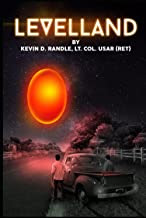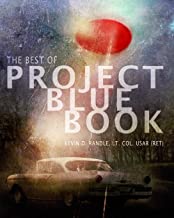Samford: I think that we’re learning progressively more and more about the radar and that these instances very likely are maybe good observations that the radar can make of something but not likely to be observations of the things the radar was designed to observe (laughter). Now, (laughter) -- all right. Now, let’s say -- we don’t know much about -- and I’ll be getting far afield here technically -- we don’t know much about the Northern Lights. We’d like to be able to measure that a little bit better. That is the kind of thought I was trying to express by saying radar was intended to observe aircraft for control of aircraft and to deal with aircraft. Now, you may have scientific advantages for observation that it wasn’t intended for.I wonder if you’d speak to my point on that, Captain James, whether I’ve gotten too far afield on something I don’t know anything about.
James: Yes, sir; that’s quite true. We find that sometimes the radar set will be formed in a manner not desirable and due to the fact that it doesn’t happen every day everyone isn’t familiar with those characteristics and it sometimes turns out to be a mystery.
Reporter: Well, getting back, if I may follow it up, on these local radar observations, then you come to the tentative conclusion that they’re physical phenomena? Would you say that?
Samford: I think so, yes.
Reporter: How is it we haven’t had them before?
Reporter: Well, that’s what I was going to get to. What’s the history of this thing? Radar operators in the past, when you inquire of them, have they seen similar lights
in the past and because they never bothered to associate them with flying saucers they’ve never gotten in the newspapers?Samford: Oh, they have associated them in the past with things that were thought desirable to intercept. I said a minute ago we’ve intercepted flocks of ducks and similar things. There’s some history of the lack of identification of friendly aircraft which causes a lot of unnecessary interceptions in some parts of the world, being mixed up with a lot of this sort of thing too in which we’ve had many interceptions that went out and identified a friendly that should have been established by some other method, but mixed up with those there have been many of these attempts to identify an unknown that fizzled out in the same way that the current ones have fizzled out.
Reporter: In other words, it is not a rare phenomenon, this thing that happened Saturday night and the Saturday before that?
Samford: It is not a rare phenomenon.
Reporter: It’s not radar, and it occurs often enough so that you do have a history, and radar experts have been trying to find out what causes them; is that right?
Samford: That is correct. Yes, sir.
Reporter: General Samford, has the Air Force conducted any independent research through universities or through radar people, the Gilfillen people or whoever?
Samford: Yes, sir. We have a number of available consultants, some contracts that have been initiated, some of them are being thought of, but, again, I think I’d like to go back to the point of profit in this thing perhaps being a measurement first, an adequate measurement that can do science. Reports of the same kind we’ve been getting except for this additional mechanical asset or opportunity called the radar have been going on since Bible times. Now, the radar gives an additional opportunity to observe something about that, but it still doesn’t measure it with the kind of precision that is needed to put it into analysis.
Reporter: Are you getting something to do that?
Samford: We have some hope with a camera that has on the front of it a -- will you describe what that --
James: It has a de-fraction grid.
Samford: Yes, a de-fraction grid on the front of it that will be useful against lights because through that de-fraction you’ll be able to say, from what substance the light was made? What gases were burning? Was it gas? Was it incandescence? And so forth. Now, those cameras -- the lens is about a $15 item, or this grid is, and the camera is about a $15 item. We have on order a small quantity, two hundred plus of those. We hope to be able to distribute those into the hands of people who might have opportunity. Now, with the great diversity of people who report it’s not too easy to put your finger on who has the highest opportunity to report, into whose hands such a device should go, but we think we may learn who might be the most optimum reporters. A great volume of these cameras to scatter around to try through the shotgun approach to get reports doesn’t look like too valuable a project but that is one way of trying to measure what there lights are.
Reporter: For what purpose -- they have had similar gadgets before, I mean, to measure and to determine the origin of what generates the light. Is this a new type?
James: The grid is.
Samford: It’s not new except that it hasn’t been aimed specifically at these items or focused on these items as far as we know.
Reporter: General, the Captain mentioned a moment ago or had the thought that when there is temperature inversion the men know who are observing radar. Is it all right to ask if the Air Force thinks that these objects the other night were a result of temperature inversion?
Samford: Well, I’ll answer that first, try to, and then ask Captain James for an opinion. I don’t think that we are quite sure that the [Dr. Donald] Menzel theory of temperature inversion or that scientists are sure that that is a good theory. It’s supported by some people. Other people who have equal competence, it would appear, discredit it. So the game as to whether that is the cause or not is about a fifty-fifty proposition. It’s appealing. It does satisfy certain concerns. Is that a fair statement or answer to that question?
James: Sir, the Menzel theory applies mainly to light rays.
Samford: Yes.
James: In regard to the temperature inversion effect on radar waves that is fairly well established.
Reporter: There’s no doubt about the latter, is there?
James: That’s right.
Reporter: That’s been established.
Reporter: And it was not --
James: We don’t have sufficient information to say definitely that that was the cause.
Reporter: You said an experienced radar operator could tell the difference.
James: I would say so.Reporter: Wasn’t there a naval battle during the war in which there was a great engagement fought against an inversion of radar?
This refers to an incident during the summer of 1943 in which a Navy task force fired a thousand rounds at objects that had appeared on radar. Lookouts reported seeing flares from the Japanese navy. Vice Admiral Robert C. Giffen had commanded the American forces in what he described as a battle of the blips. In other words, Giffen was suggesting that the Navy had fired on targets that were a result of temperature inversions and not on something real, that is Japanese, that was attempting to invade one of the Aleutian Islands. James said that he understood that this had happened.





















1 comment:
Greetings Kevin,
I dont think "battle if the pips" on 26 July 1943 was due to "temperature inversion", but as return echoes from mountains more than 160km away.
Extract of a WW2 forum :
"This battle was so-called because of the blips, or pips, that appear on the radar screen to indicate contact with a ship or aircraft. At 0007 on 26 July 1943, a US flying boat reported a contact with 7 ships 320km south west of Attu, on of the Aleutian islands. American warships patrolling off Kiska, which was occupied by the Japanese, went to investigate. They too, picked up radar contact and, thinking it was an enemy convoy bound for Kiska, engaged it.
A total of 1000 shells were fired, the wakes of torpedoes were sighted, and flares and lights reported. Below decks men felt the 'shock' of imagined near misses and one had a battle induced nervous breakdown. While the 'battle' was raging the Japanese evacuated Kiska undisturbed and it was dawn before the radar targets were identified as return echoes from mountains more than 160km away".
At least, MJ12 (Moore false) documents have forgotten to decontextualize this episode of WII false alarm, as they did for L.A. False Alarm becomed UFO case in the 80's.
;)
Best Regards,
Gilles F.
Post a Comment